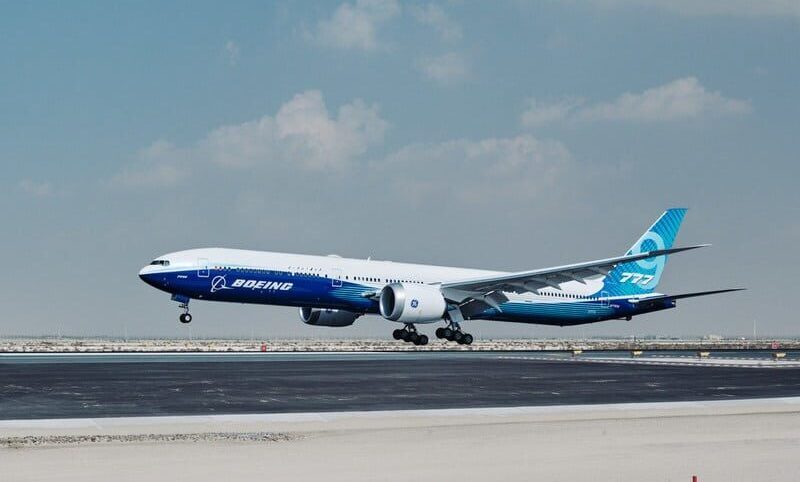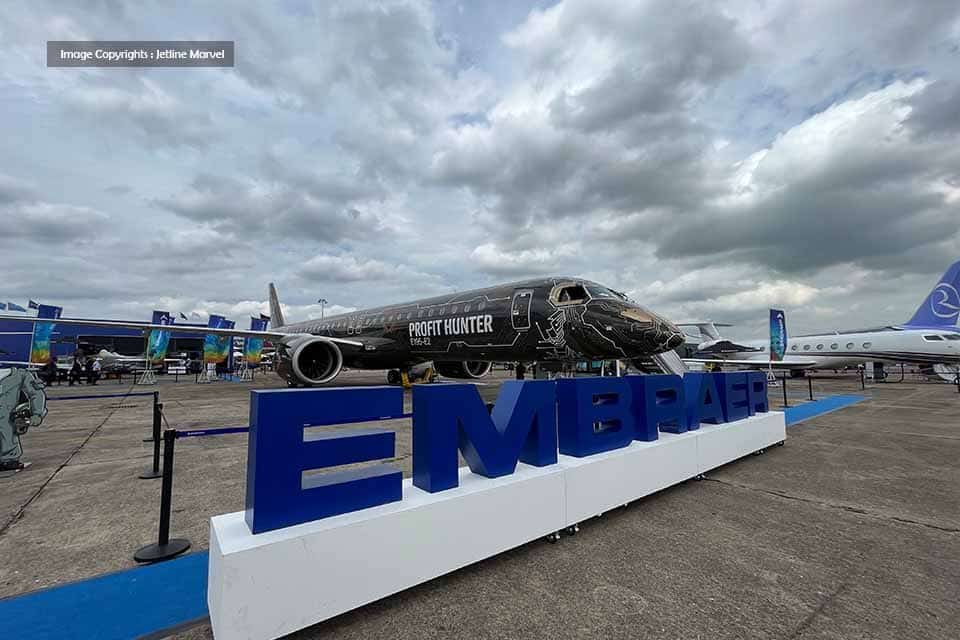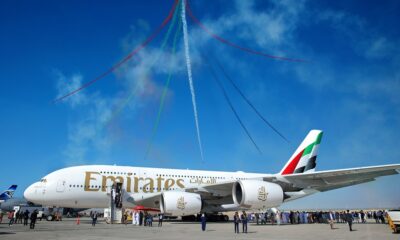Airlines
Emirates invests US$ 135 million in new pilot training centre

Emirates will soon build an advanced training facility to accommodate 6 Full Flight Simulator Bays (FFS) for its future Airbus A350 and Boeing 777X aircraft. The brand new, 63,318 sq. ft. facility is slated to open in March 2024.
The new building will be adjacent to the existing Emirates Training Facilities in Dubai, which will provide a great integration and close proximity to all the other pilot training centres.
Pilot trainees will also benefit from being able to set-up and configure the cockpit environment using bespoke devices as part of the pilot training module and upload the data to the Full Flight Simulator (FFS) prior to commencing their training session. This innovative, first-of-its-kind concept is designed to shorten the trainee’s preparatory time inside the simulator, help them maintain focus and take full advantage of the training duration.
With the addition of the new building to Emirates’ existing training colleges in Dubai, the airline will have the potential to expand its pilot training capacity by 54% per year. Across the airline’s training buildings, Emirates’ pilots will have increased flexibility and facilities to hone their flying skills with 17 full flight simulator bays offering a capacity of more than 130,000 training hours a year.
These are the 8 benefits of being an Emirates Pilot.(Opens in a new browser tab)
In line with the scheduled delivery of Emirates’ first Airbus A350 aircraft, the airline’s newest training college will commence training its first batch of A350 pilots by June 2024.
In addition to modern training facilities for its flight deck crew, the airline offers a range of world-class training and development programmes for its workforce and for other aviation professionals. In Dubai, these include: the Emirates Flight Training Academy for cadets, Emirates Aviation University, Emirates Cabin Crew Training Centre, and numerous programmes specially created for different segments of its employees.

Airlines
A New Player Takes Off: Embraer Poses a Formidable Challenge to Boeing

In the midst of ongoing challenges faced by Boeing and the aviation industry at large, Brazilian aircraft manufacturer Embraer has been thrust into the spotlight.
Recent reports suggesting that Embraer is eyeing the development of a next-generation narrow-body aircraft have sparked intrigue and speculation. However, the company has swiftly moved to quash such rumors.
Internal assessments conducted within Embraer have indeed highlighted the company’s impressive technological prowess and manufacturing capabilities. These findings have led some to speculate about the potential for Embraer to enter the narrow-body aircraft market, traditionally dominated by industry giants Boeing and Airbus.
In light of Boeing’s recent challenges, including the protracted grounding of its 737 MAX jets and leadership upheavals, some industry analysts have suggested that there may be an opportunity for smaller players like Embraer to disrupt the market duopoly. Airbus, too, has plans to introduce a new narrow-body aircraft in the future, further intensifying competition in this space.
However, despite the potential openings created by Boeing’s troubles, Embraer appears cautious about overextending itself. The company is currently focused on maximizing the success of its existing portfolio, which includes the innovative E2 aircraft series.
Additionally, the emergence of alternatives such as China’s Comac C919 adds another layer of complexity to the competitive landscape. While the C919 has thus far secured orders primarily from Asian carriers, Boeing’s challenges could prompt airlines worldwide to explore alternative options.
Airlines
Air India Revised Baggage Rules for Domestic Flights

Air India, one of India’s leading airlines, has implemented significant changes to its baggage policies, affecting travelers across various fare classes.
Effective May 2, 2024, the airline has rolled out a revised baggage allowance scheme, marking a reduction in the permitted weight limits for most fare categories. Under the updated guidelines, passengers booking economy and business class tickets will notice a decrease in their baggage allowance by 5 to 10 kilograms compared to previous allowances.
These adjustments reflect Air India’s response to market dynamics and regulatory requirements. In the Economy Comfort category, encompassing S, T, U, and L fare classes, travelers will now have a baggage allowance of 15 kilograms, down from the previous 20 kilograms. As reported by livefromalounge.
Similarly, passengers availing themselves of Economy Comfort Plus, including G, W, V, Q, and K fare classes, will see their baggage allowance reduced to 15 kilograms from the earlier 25 kilograms.
However, not all fare classes are subject to reductions. Economy Flex passengers, represented by the H, M, B, and Y fare classes, will maintain their previous baggage allowance of 25 kilograms.
In the business class segment, changes are also evident. Business Comfort Plus, consisting of Z and J fare classes, will now offer a baggage allowance of 25 kilograms, down from the prior 35 kilograms. Meanwhile, passengers booking Business Flex tickets under the D and C fare classes will have a revised baggage allowance of 35 kilograms, compared to the previous 40 kilograms.
For passengers planning their upcoming journeys with Air India, it is essential to review the updated baggage policies to ensure compliance and avoid any inconvenience during their travel experience.
Airlines
These are two airlines that placed the largest orders for Comac

China Southern Airlines has made a significant move in the aviation industry by placing a monumental order for 100 Comac C919 aircraft.
Marking a pivotal moment in the commitment of state-owned Chinese airlines to domestically developed planes. The deliveries are set to commence this year and continue until 2031.
The order holds a considerable value of USD 9.9 billion; however, China Southern will benefit from substantial discounts provided by the manufacturer, Commercial Aircraft Corporation of China. This announcement comes closely after Air China’s recent order for 100 C919s, albeit in the Extended Range variant.
China Southern’s decision to invest in the C919 reflects its strategic vision to address capacity demands, achieve fleet balance, and enhance its overall strength and brand image.
By incorporating these advanced aircraft into its operations, the airline aims to alleviate pressure on capacity, optimize its fleet structure, and bolster its competitive position in the market.
As China continues to assert itself in the global aviation industry, the significant orders placed by its state-owned carriers underscore the country’s commitment to domestic aviation manufacturing.
With both China Southern Airlines and Air China making substantial investments in the Comac C919, the stage is set for these domestically developed aircraft to play a pivotal role in shaping the future of Chinese aviation.




























